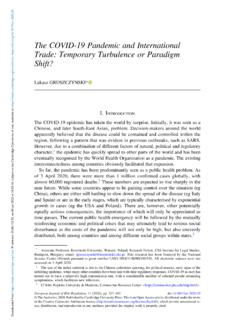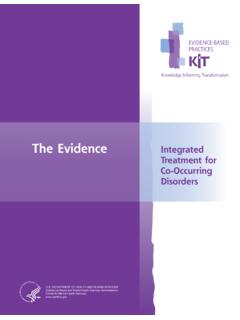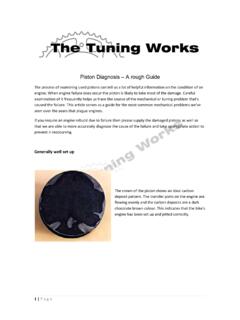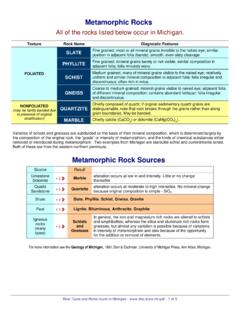Transcription of Learning language in chunks - Cambridge University Press
1 CONTENTS2 Introduction3 Key terms4 Key issues5 Research and literature review: significant findings16 Key considerations17 Summary: What are the implications for teachers?18 Conclusion19 Recommendations for further reading plus useful websites20 Bibliography Learning language in chunks Part of the Cambridge Papers in ELT series July 2019 IntroductionIt was over 25 years ago that Michael Lewis published The Lexical Approach (Lewis, 1993), prompting a radical re-think of the way that we view language and, by extension, of the way that we teach it. In contrast to the then prevailing structural account, in which language was viewed as comprising grammatical structures into which single words are slotted, Lewis argued that language consists of chunks which, when combined, produce continuous coherent text (Lewis, 1997: 7).
2 By chunks , Lewis was referring to everything from: collocations (wrong way, give way, the way forward) fixed expressions (by the way, in the way) formulaic utterances (I m on my way; no way!) sentence starters (I like the ) verb patterns (to make/fight/elbow one s ) idioms and catchphrases (the third way; way to go!).. everything, in fact, that doesn t fit neatly into the categories of either grammar (as traditionally conceived) or single-word vocabulary. Lewis was by no means the first to describe language in these terms: his singular contribution was to argue that, in order to accommodate this alternative description, it was language teaching that needed to be reformed or, indeed, revolutionised. This paper charts the extent to which the Lexical Approach, or Learning language as chunks , as Lewis and subsequent scholars conceived it, is being applied a quarter of a century on, and the research that underpins such an termschunk: an all-purpose word that embraces any formulaic sequence, lexical/phrasal expression or multi-word (or bundle): any commonly occurring sequence of words, irrespective of meaning or structural completeness, at the end of the, you know : two or more words that frequently occur together, false eyelashes, densely populated, file a tax : a database of texts, typically authentic, which is digitally accessible for the purposes of calculating frequency, identifying collocations, language .
3 A sequence, continuous or discontinuous, of words or other meaning elements, which is, or appears to be, prefabricated: that is, stored and retrieved whole from memory at the time of use, rather than being subject to generation or analysis by the language grammar (Wray, 2000: 465).functional expression: formulaic ways of expressing specific language functions, Would you (for inviting).idiom: an expression whose meaning is not the sum of its individual words, it is non-compositional , a wild goose chase, run out of steam, plain principle:the principle of language use whereby a language user has available to him or her a large number of semi-preconstructed phrases that constitute single choices, even though they might appear to be analysable into segments (Sinclair, 1991: 110).
4 This contrasts with the open choice principle , where the only restraint on word choice is grammaticalness .idiomaticity:the degree to which a particular wording is conventionalised in the speech community. For example, the time is said as twenty past three or three twenty , but not three and a third (as its Egyptian Arabic equivalent would be translated, for example).lexical approach: an approach to language teaching that foregrounds the contribution of vocabulary, including lexical chunks , to language use and phrase: one of many alternative terms to describe multi-word (Mutual Information): a statistical measure of the strength of a collocation based on the likelihood of its individual elements occurring together more frequently than would be expected by chance: short + straw, for example, has a higher MI score than long + straw, while draw + the short straw has a higher MI score than choose + the short straw.
5 N-gram: a cluster defined in terms of its length, common 3-word n-grams are I don t know, a lot of, I mean I .. (O Keeffe et al., 2007: 66).phrasal verb: a combination of a verb plus a particle (either adverb or preposition) that is often idiomatic: she takes after her father; the plane took off. phraseology: a general term to describe the recurring features of language that are neither individual words nor grammatical structures. 3 Key issuesLewis s Lexical Approach was strongly, even fiercely, argued, but was only sketchily supported by evidence. In the intervening years, researchers directly or indirectly have been investigating his claims, with a view to answering these key questions (among many others): To what extent does language consist of chunks ?
6 How can chunks be integrated into the second language curriculum?How might the Learning of chunks benefit language Learning overall?How are chunks best learned and taught? What materials and activities might support their acquisition?1324 This paper addresses each of these questions in and literature review: significant findings1. To what extent does language consist of chunks ?In order to estimate the proportion of spoken or written text that is chunk-like , we first need to define chunk . This is easier said than done: the number of terms that are used to capture the phenomenon is bewildering. One writer (Wray, 2002) listed over 50, but current practice seems to favour, as an (uncountable) umbrella term, formulaic language , embracing different types of multi-word units (MWUs), or what most non-academic texts for teachers refer to simply as (lexical) chunks .
7 (Krishnamurthy (2002: 289) prefers the term chunk since, being relatively recent, it has less baggage associated with it .) These, in turn, can be subdivided into such overlapping categories as collocations, lexical phrases, phrasal verbs, functional expressions, idioms, and so on (see the Key terms on page 3 for definitions). What the items in these categories have in common is that: they consist of more than one word they are conventionalised they exhibit varying degrees of fixedness they exhibit varying degrees of idiomaticity they are probably learned and processed as single items (or holophrases ).Word combinations are conventionalised if they occur together with more than chance frequency. Corpus linguistics has exponentially enhanced our knowledge of what combinations of words are significantly frequent.
8 Thus, the sequence no way of [+ -ing] can be completed with virtually any verb, but only one knowing is significantly frequent. (It is more than ten times more common than the next most frequent combination: no way of telling.) Moreover, according to The Corpus of Contemporary American English (Davies, 2008) it is relatively common across a variety of registers: spoken language , fiction, news and academic way of [+-ing]no way of knowingon the wayon my wayno way of tellingon [..] wayby the wayDiagram showing some examples of the fixedness of key phrases used with regard to fixedness, an example of a fixed chunk is by the way, which, as a discourse marker, allows no variation: *by a way, *by the ways. On the way, however, allows some variation, on my way.
9 By and large is an example of a chunk that is not only fixed but also idiomatic, it is non-compositional : its composite meaning cannot be inferred from its individual words. By the way, on the other hand, is less idiomatic since even in its sense of marking a new direction in the discourse its meaning is relatively easily derived from its parts. In terms of their psycholinguistic status, that is, the way that they are mentally stored and accessed, there is growing evidence, from eye-tracking and read-aloud studies (see, for example, Ellis et al., 2008), that chunks are processed holistically, rather than as a sequence of individual words. This is attributed to frequency effects: the more often a sequence (of morphemes or words) is encountered, the more likely it is that it is represented and retrieved as a single unit (Siyanova-Chanturia & Martinez, 2014).
10 However, it would be unwise to assume that what corpus data reveal about recurring sequences necessarily reflects the way that these sequences are mentally organised. Using dictation and delayed recall tasks, Schmitt et al (2004: 147) found that neither their native nor their non-native speaker informants consistently retrieved chunks as whole units, leading them to conclude that it is unwise to take recurrence of clusters in a corpus as evidence that those clusters are also stored as formulaic sequences in the mind .Nevertheless, and regardless of how chunks are defined, their pervasiveness is a fact of life: one frequently cited estimate is that nearly 60% of spoken language (slightly less of written) is formulaic to some degree. Biber et al (1999: 990), using slightly different criteria, found that 45% of the words in their extensive corpus of conversational English (but only 21% in academic prose) occurred in what they called bundles , recurrent expressions, regardless of their idiomaticity, and regardless of their structural status.
















